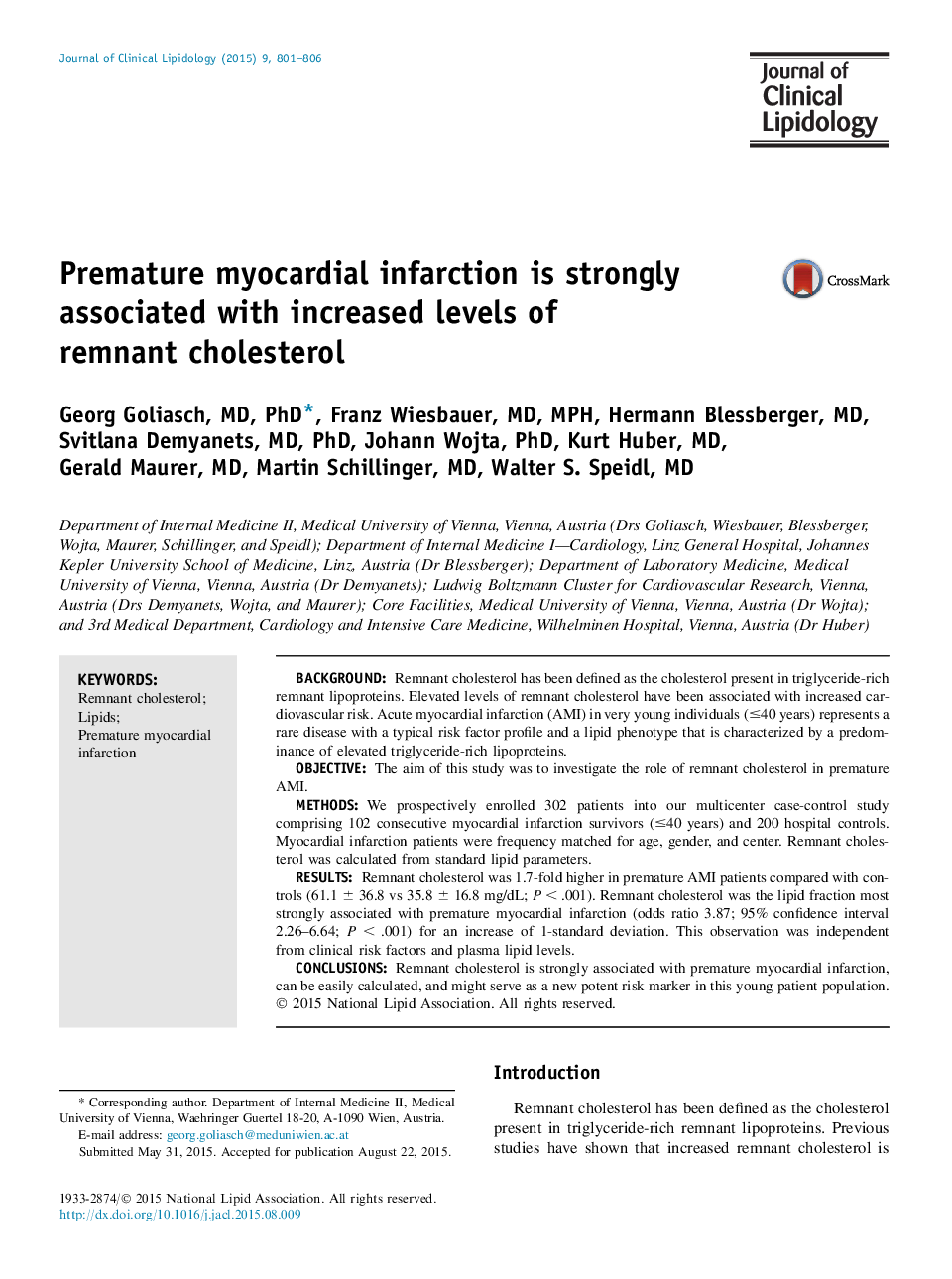| Article ID | Journal | Published Year | Pages | File Type |
|---|---|---|---|---|
| 5985806 | Journal of Clinical Lipidology | 2015 | 7 Pages |
â¢Remnant cholesterol is strongly associated with premature myocardial infarction.â¢Remnant cholesterol can be easily calculated with a high accuracy.â¢Remnant cholesterol might serve as a powerful risk predictor in these young patients.
BackgroundRemnant cholesterol has been defined as the cholesterol present in triglyceride-rich remnant lipoproteins. Elevated levels of remnant cholesterol have been associated with increased cardiovascular risk. Acute myocardial infarction (AMI) in very young individuals (â¤40 years) represents a rare disease with a typical risk factor profile and a lipid phenotype that is characterized by a predominance of elevated triglyceride-rich lipoproteins.ObjectiveThe aim of this study was to investigate the role of remnant cholesterol in premature AMI.MethodsWe prospectively enrolled 302 patients into our multicenter case-control study comprising 102 consecutive myocardial infarction survivors (â¤40 years) and 200 hospital controls. Myocardial infarction patients were frequency matched for age, gender, and center. Remnant cholesterol was calculated from standard lipid parameters.ResultsRemnant cholesterol was 1.7-fold higher in premature AMI patients compared with controls (61.1 ± 36.8 vs 35.8 ± 16.8 mg/dL; P < .001). Remnant cholesterol was the lipid fraction most strongly associated with premature myocardial infarction (odds ratio 3.87; 95% confidence interval 2.26-6.64; P < .001) for an increase of 1-standard deviation. This observation was independent from clinical risk factors and plasma lipid levels.ConclusionsRemnant cholesterol is strongly associated with premature myocardial infarction, can be easily calculated, and might serve as a new potent risk marker in this young patient population.
